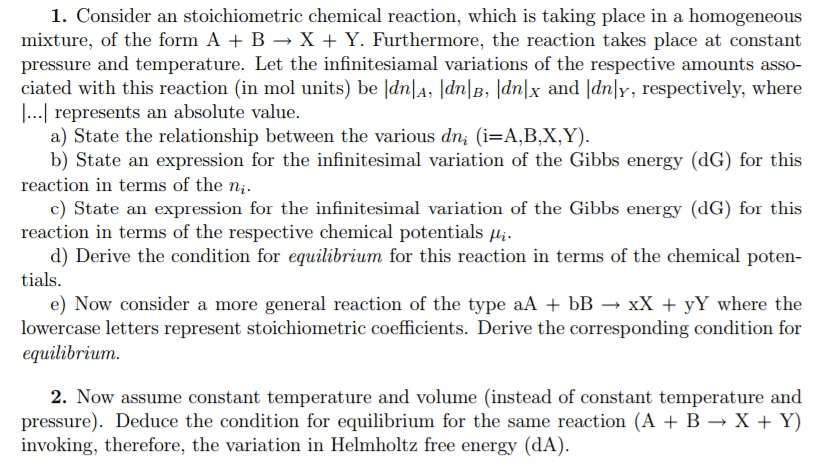CHEM 204 Lecture Notes - Lecture 4: Molality, Vant (Band), Thermodynamic Equilibrium
Document Summary
Chem 204 chemical equilibrium: this section will focus on deriving an expression relating the gibbs energy change for a reaction in the gas phase to the concentrations of the reacting species and temperature. Ideal gasses: this is an example of the simplest type of equilibrium: That is: and therefore, this shows that: (cid:1833)(cid:3003) (cid:3003)>(cid:3002, at equilibrium, (cid:3003)=(cid:3002), so that (cid:1833)=(cid:882) (cid:1853)(cid:1827)(cid:4666)(cid:1859)(cid:4667) (cid:1854)(cid:1828)(cid:4666)(cid:1859)(cid:4667) = +(cid:1844)(cid:1846)ln((cid:1858) : where fugacity has the same dimensions as pressure, but with a different, at low pressures, the gas behaves ideally and fugacity equals pressure, but the deviation occurs as pressure increases. The fugacity is different whether it deviates higher or lower than the pressure line: thus the fugacity coefficient is given by: D: we can use this same principle when dealing with the equilibrium constant. In an ideal gas reaction, kf = kp. Assuming ideal behavior and expressing the solute in molalities, we have, from our unit on solutions:



